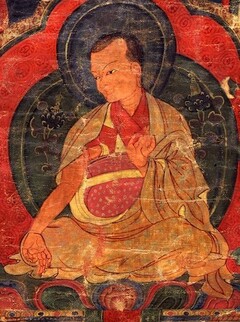Biography Series
English (60) | Español (4) | Français (13) | Português (2) | 中文 (2) | བོད་ཡིག (58)
Translations of various namthar (rnam thar) or biographical works arranged by subject:
Adzom Drukpa
by
Lhundrup Tso
Böpa Tulku Dongak Tenpe Nyima
Chögyal Puntsok Rigdzin
Chokgyur Dechen Lingpa
Ḍākinī Treasury
Drakkar Lobzang Palden
Dudjom Lingpa
Dzogchen
Golok Serta Rinpoche
Guru Jober
Guru Padmasambhava
by
Tāranātha
